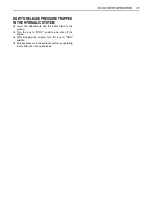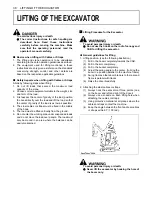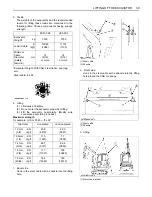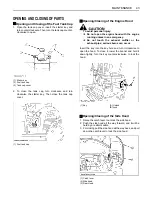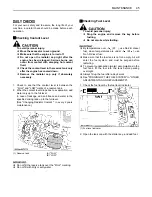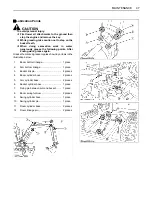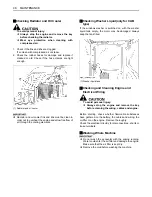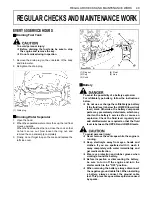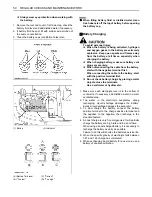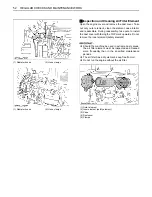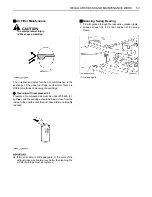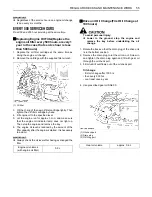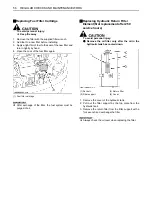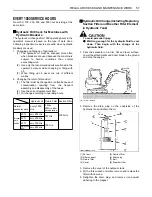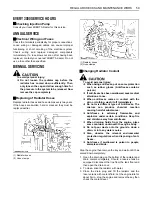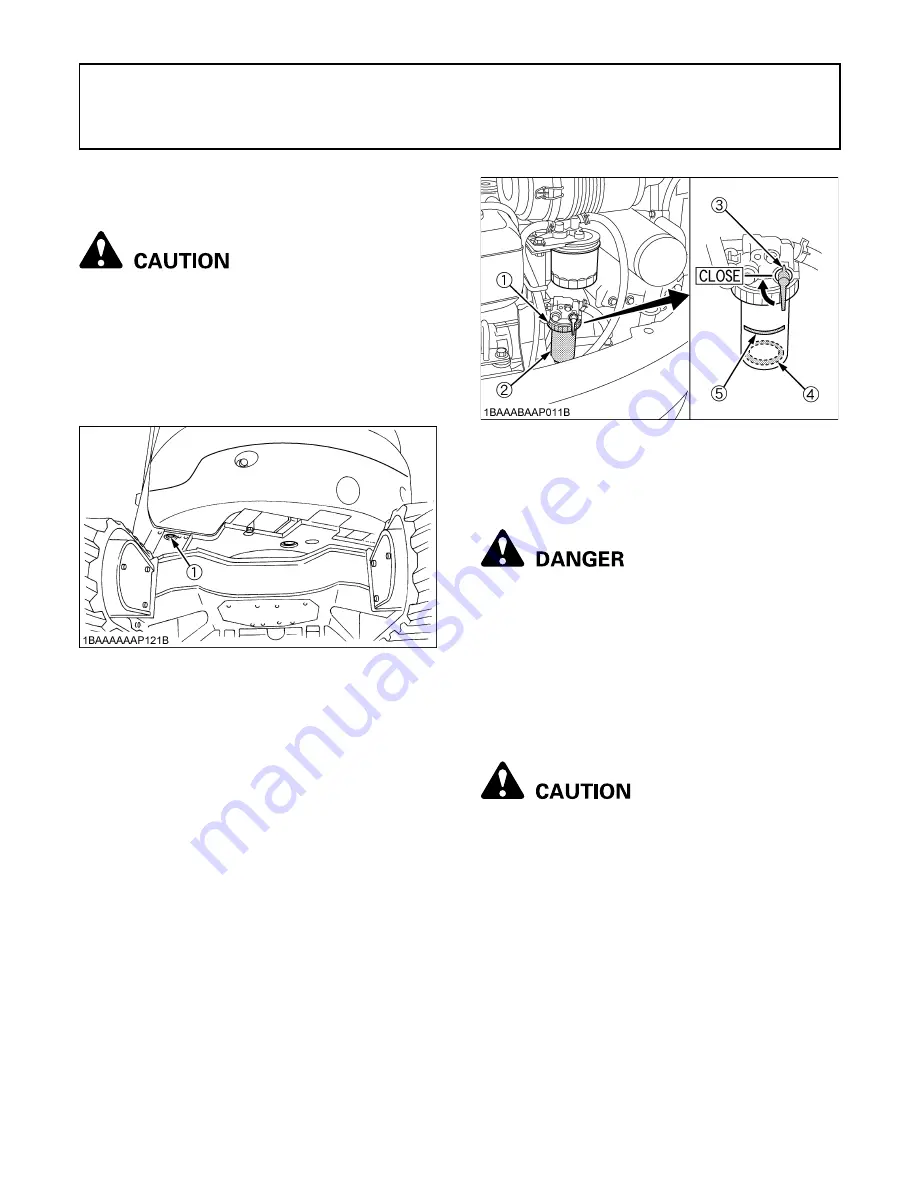
49
REGULAR CHECKS AND MAINTENANCE WORK
REGULAR CHECKS AND MAINTENANCE WORK
EVERY 50 SERVICE HOURS
B
Draining Fuel Tank
To avoid personal injury:
A
Before draining the fuel tank, be sure to stop
the engine and remove the key.
A
Do not smoke during inspection.
1. Remove the drain plug on the underside of the body
and drain water.
2. Re-tighten the drain plug.
B
Draining Water Separator
1. Open the hood.
2. When the separated water enters the cup, the red float
moves upwards.
When the float reaches the line, close the cock so that
no fuel can run out. Now loosen the ring nut, and
remove the cup and empty completely.
3. Finally, do not forget to open the cock and replace the
left side cover.
B
Battery
To avoid the possibility of a battery explosion:
For refillable type battery, follow the instructions
below.
A
Do not use or charge the refillable type battery
if the fluid level is below the LOWER (lower limit
level) mark. Otherwise, the battery component
parts may prematurely deteriorate, which may
shorten the battery's service life or cause an
explosion. Check the fluid level regularly and
add distilled water as required so that the fluid
level is between the UPPER and LOWER levels.
To avoid personal injury:
A
Never remove the vent caps while the engine is
running.
A
Keep electrolyte away from eyes, hands and
clothes. If you are spattered with it, wash it
away completely with water immediately and
get medical attention.
A
Wear eye protection and rubber gloves when
working around the battery.
A
Before inspection or dismounting the battery,
be sure to turn off the engine and turn the
starter switch to the "OFF" position.
A
When removing the battery, always disconnect
the negative ground cable first. When installing
a battery, always connect the ground cable
last. This prevents a possible explosion caused
by sparks.
(1) Drain plug
(1) Ring nut
(2) Cup
(3) Cock
(4) Float
(5) Line
Summary of Contents for Super Series 2 KX 91-3
Page 14: ...SAFE OPERATION 6 6 DANGER WARNING AND CAUTION LABELS...
Page 15: ...7 SAFE OPERATION...
Page 16: ...SAFE OPERATION 8...
Page 17: ...9 SAFE OPERATION...
Page 18: ...SAFE OPERATION 10...
Page 19: ...11 SAFE OPERATION...
Page 20: ...SAFE OPERATION 12...
Page 95: ...75 LIFTING CAPACITY...
Page 96: ...76 LIFTING CAPACITY...
Page 97: ...77 LIFTING CAPACITY...
Page 98: ...78 LIFTING CAPACITY...

